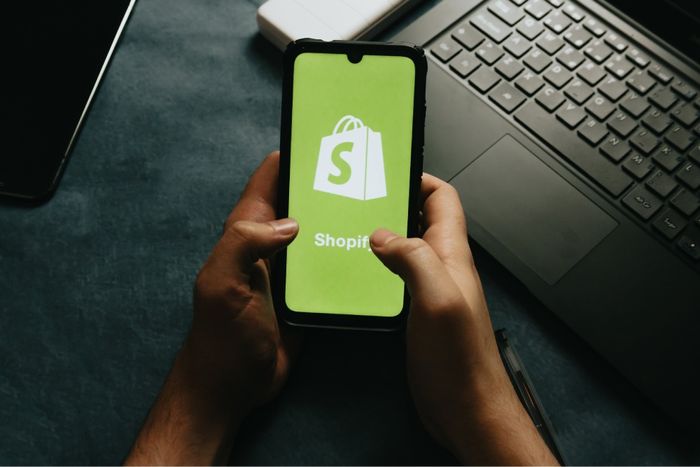What is Shopify and How to Use It in Ecommerce
Published June 24, 2024.

Shopify has a reputation for being one of the best eCommerce platforms in the world. Whether your business is large or small, Shopify allows you to build a fully-functional store where you can sell online.
So how does Shopify work? Well, we’re about to tell you in this extensive Shopify guide.
Shopify: What is it?
First things first, the Shopify definition is a subscription to software as a service (SaaS).
Essentially, for $29 per month, you can create an eCommerce website using one of their many templates and utilize their shopping cart solution to distribute products. You also get access to an admin panel where you can manage your orders, products, inventory, and shipping.
There’s even an app store where you can fulfill any additional selling needs. There are thousands of apps in the store. For example, if you plan to manage multiple Shopify stores, then one of our apps – Multi-Store Sync Power will be a great tool.
You also need to know that you don’t have to just sell via your website if you don’t want to. You can sell in multiple places, including mobile, social media, brick-and-mortar locations, online marketplaces, and pop-up shops.
Another great thing about the platform is that you can integrate it with other software, such as Amazon, Oberlo, and Clickfunnels.
Not sure if it’s the right option for you? Not to worry — Shopify offers a free 14-day trial, so you can try it without any obligation to purchase.
The History of Shopify Explained
Founded in 2004 by Tobias Lutke, Daniel Weinand, and Scott Lake, Shopify was initially called “Snowdevil” and offered snowboarding equipment to the elite.
Due to little success, the company was reborn in 2006 with a new mission: build an easy-to-use eCommerce platform that allowed anyone to create and manage their own store.
What is a Shopify store? Well, simply put, it’s a website where you can sell digital or physical products seamlessly.
Having said that, Shopify didn’t gain popularity until 2015. This was when Amazon announced Shopify as the primary migration provider for their store merchants. Nowadays, you can sell directly on Amazon from your Shopify store.
And Shopify Inc. is a multinational company headquartered in Ottawa, Ontario, with over 5,000 employees and 1,000,000 users.
How does Shopify Work?
Shopify is super straightforward to use, whether you’re new to online selling or an advanced eCommerce retailer.
You are struggling in terms of how to use Shopify? This Shopify step by step guide has got you covered.
1. Sign Up
Firstly, you can start your 14-day free trial by signing up with just an email address.
2. Add Products
Shopify for beginners: your next step is to add your product names, descriptions, images, and prices.
And the good news is that the platform allows you to grow and organize them in any way you like, for instance, by gender (men and women) or by category (tops, jumpers, coats, trousers, etc.). You can also add as many products as you like!
3. Customize Your Theme
The next step is to choose your website design from a wide range of eye-catching Shopify templates.
Then create compelling sales copy, upload your marketing imagery (including a logo) and pick a color scheme that works in line with your branding.
4. Choose a Domain Name
Proceed to pick a domain that corresponds with your store name and sets you apart from your competition.
5. Enable Payment Getaways
A lot of people think that one of the Shopify requirements is that you have to use their payment gateway via debit or credit card, but this couldn’t be further from the truth.
You can choose from over 100 payment providers and integrate them into your Shopify store, from PayPal to Stripe, Worldpay to Klarna, Amazon Pay to Sage Pay.
And you still gain access to Shopify’s reporting and sales figures.
6. Specify Your Shipping Methods
Next, set up your shipping specifications. Assign costs and locations so that your products are delivered to your customers as quickly and safely as possible.
7. Integrate Apps
If you want to add extra functionality to your store, enable multi-channel selling, simplify inventory management, what does Shopify do? It allows you to search their wide range of apps and integrate them at the click of a button.
8. Pick a Price Plan
Once you’ve set up an online store and the 14 days of your free trial have passed, decide on one of the following price plans that align with your needs and budget.
- Basic Shopify: This plan costs just $29 per month and allows you to create a store with unlimited products, a blog, free SSL certification, and 24/7 support to improve customer experience.
- Shopify Plan: This is the most popular Shopify plan and costs $79 per month. In addition to everything from the basic plan, you get access to premium themes, professional reporting, and abandoned cart recovery, which prompts customers to finish incomplete orders.
- Advanced Shopify: In addition to everything from the Basic and Shopify plans, Advanced Shopify allows you to have up to 15 staff accounts, advanced reporting, and unlimited cart recoveries. Best suited to high revenue companies, this plan costs $299 a month.
- Shopify Plus: How many stores can you have on Shopify? Starting at $2,000 per month, this plan allows big companies that want to sell in different markets to create up to nine stores, unlike the other packages where you can only build one store. You also gain access to more features, including the Shopify Plus academy. This resource has a Shopify website tutorial and other online training resources to help you grow your store.
All of these plans are subject to additional transaction fees. For full details, visit the Shopify website.
9. Hit Publish!
Finally, publish your store and start building your customer base.
This completes the “Shopify for dummies” guide, not that we’re calling you a dummy! We’re just saying that the whole process is incredibly straightforward.
Other Shopify Plans to Consider
Oh, and did we mention that Shopify also offers a “Lite” plan?
The plan starts from $9 per month. It is tailored for businesses that want to sell products via social media or their blog.
You don’t get to create an online store on this plan, but you do get access to inventory management, payment gateways, and a dashboard overview.
Similarly, Shopify POS (Point of Sale) allows you to sell products offline at a physical store, trade shows, and pop-up shops.
All you have to do is use your iPhone, iPad, or Android to accept Shopify payments with the POS app.
Understanding Shopify: Why is It so Popular?
There are lots of reasons why Shopify is so popular. Let’s address the most important ones below.
Ease of Use
Over 640,000 store owners love Shopify mostly because of its design.
For Shopify beginners who have never sold online before, their stripped-back content management system allows you to get started quickly and easily. This is one of the main reasons why Shopify’s market share is rapidly increasing.
Also, did you know that Shopify is cloud-based and hosted? When you create your store, you don’t have to worry about maintaining web servers, finding a domain name, or resolving potential Shopify software issues.
Everything is included in your plan, which ensures your hosting will be secure and reliable.
And if you have any problems or just need a Shopify tutorial, there’s a dedicated team of software engineers on hand 24/7 to assist you through phone, email, and live chat.
Moreover, you can access a dashboard panel where you can manage everything to do with your store in one place.
Customatizion Possibilities
Another reason why online sellers love Shopify is that you can customize your store in any way that you want.
There are hundreds of aesthetically-pleasing yet professional templates to choose from. (And the good news is that you don’t need any coding skills!)
Additionally, over 2,000 customization apps exist with price points ranging from $9.99 to $60+, meaning that the freedom to personalize your store is unlimited.
Performance
In addition to being able to unleash your creativity when you design your Shopify store, you don’t have to worry about functionality.
Shopify is the second-fastest eCommerce platform when it comes to performance.
It also loads speedily on mobile, which means that your customers stay longer on your website. Faster loading speed reduces your bounce rate and has a positive impact on your Search Engine Optimisation (SEO) score.
Strong Sales Features
Store owners are very busy people with numerous things to think about on a daily basis.
Therefore, having a sales-focused platform with a wide variety of tools that actively help you to grow your business is extremely handy.
If you’re wondering how to make a successful Shopify store, opt for the following features.
- Abandoned cart recovery, which emails potential customers who clicked off your website after adding products to their cart and reminds them to complete their transaction.
- Third-party integrations with companies. For example, Sprocket and Oberlo make drop-shipping from your Shopify admin no trouble at all.
- Targeted marketing campaigns, where you can adjust the type of discount and coupon you apply to products and send them exclusively to your email list to encourage more sales.
- Reward app integration with companies such as Swell, Smile.oi, beans, and Loyalty Lion, which can inspire new customers.
- Cross-selling and up-selling, which will help you drive up the average order value.
- Multi-channel selling, thanks to integration opportunities with apps like Facebook, eBay, and Amazon, can prompt more sales.
- Built-in SEO, including the ability to provide ALT tags, meta descriptions, and title tags which can drive traffic to your website through search engines and increase your conversion rate.
- Analytics and reporting allow you to assess which products are selling well and which products aren’t so you can adjust your sales strategy accordingly.
Ultimately, all of these sales features can help you nail how to be successful on Shopify’s platform.
Different Plans Available
The fact that Shopify offers several plans is beneficial for online stores of all sizes. Simply choose the one that works best for your business and budget.
Either way, the various customization options available make every plan of excellent value for money.
After all, there’s a reason why companies such as Budweiser, Tesla Motors, Red Bull Penguin Books, and The Economist are all on board with Shopify.
The Takeaway
In summary, Shopify is a global eCommerce platform that makes building a beautiful and successful online store a breeze.
Its software is incredibly user-friendly, highly flexible in design, and good value for money.
Shopify primarily focuses on simplicity and sales, which is always going to be a winning combination.




